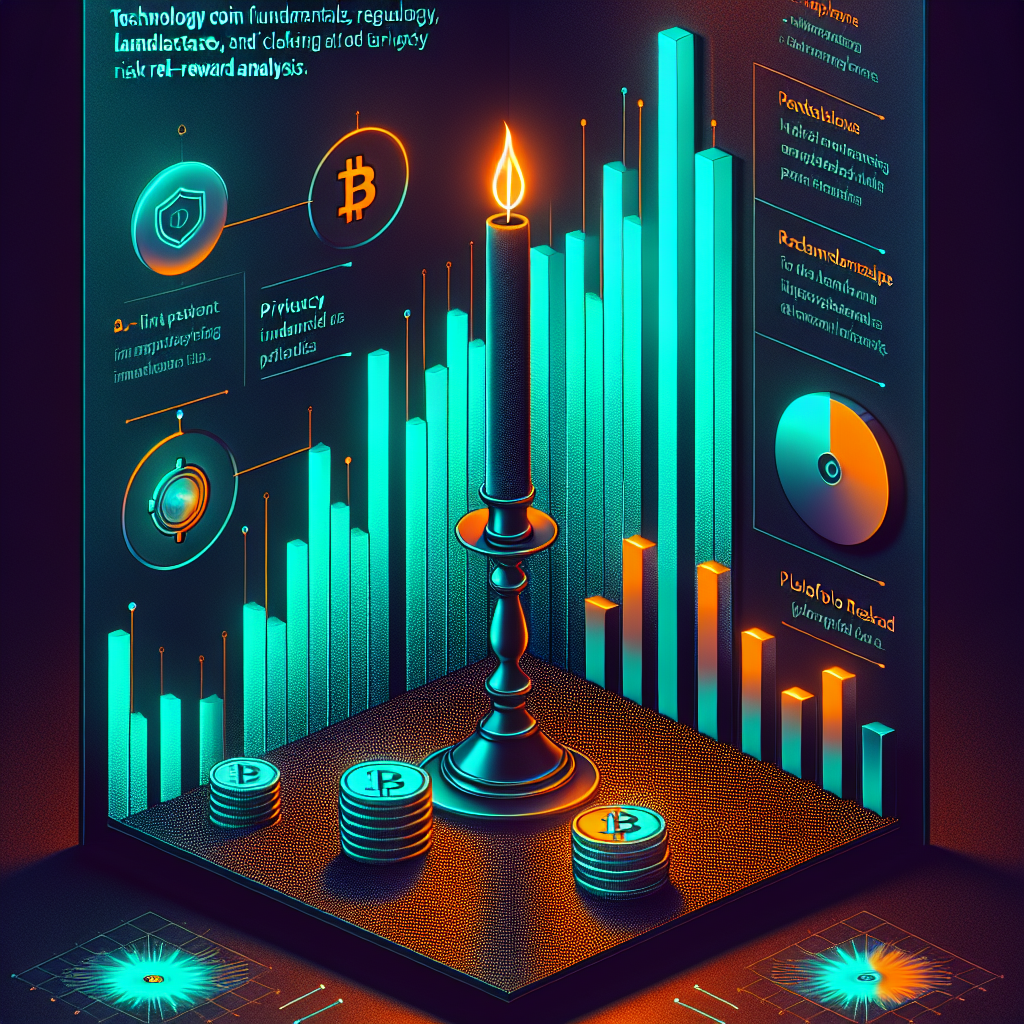Investing in Privacy Coins: Technology Fundamentals, Regulatory Landscape, and Portfolio Risk–Reward Analysis

Introduction
Privacy coins have emerged as a distinctive segment within the cryptocurrency market, promising users a higher degree of anonymity than Bitcoin or Ethereum can offer natively. Tokens such as Monero (XMR), Zcash (ZEC), and Dash (DASH) leverage advanced cryptography to conceal sender, receiver, and transaction amounts. For investors, these assets present a compelling mix of technological innovation, regulatory uncertainty, and asymmetric return potential. This article explores the fundamentals that power privacy coins, the evolving legal context, and how to weigh their risk–reward profile inside a diversified crypto portfolio.
Technology Fundamentals of Privacy Coins
At their core, privacy coins use on-chain protocols designed to obfuscate identifying information. Unlike Bitcoin’s transparent ledger, they incorporate advanced techniques such as zero-knowledge proofs, ring signatures, and stealth addresses. These methods break the on-chain link between addresses and balances, preventing chain analysis firms or state actors from easily tracing fund flows. Understanding how each protocol achieves this privacy shield is critical because it affects scalability, transaction cost, and the likelihood of future upgrades.
Consensus mechanisms for privacy coins typically mirror other cryptocurrencies—Proof of Work (Monero), Proof of Stake (some Zcash iterations), or hybrid systems (Dash) — but must integrate privacy logic at the base layer. This added complexity can raise computational overhead and may introduce novel attack vectors if cryptographic assumptions fail. Consequently, investors should watch for peer-reviewed research, active developer communities, and formal audits when evaluating long-term viability.
Popular Privacy Protocols
- Ring Signatures (Monero): Mix a user’s inputs with decoys, making it statistically improbable to determine the true sender.
- Zero-Knowledge Proofs (Zcash): Use zk-SNARKs or zk-Sapling to verify a transaction without revealing amounts or addresses.
- CoinJoin & PrivateSend (Dash): Combine multiple transactions into one, breaking linkability between sender and receiver.
Regulatory Landscape
Privacy coins straddle a regulatory gray zone. Agencies such as the Financial Action Task Force (FATF) and the U.S. Treasury’s Financial Crimes Enforcement Network (FinCEN) emphasize compliance with Know Your Customer (KYC) and Anti-Money Laundering (AML) standards. Because privacy coins impede transaction monitoring, some exchanges have delisted them to avoid potential penalties. Japan, South Korea, and Australia have implemented partial bans, while the European Union debates similar restrictions. Nonetheless, privacy coins have not been outright prohibited in most jurisdictions, underscoring the nuanced tug-of-war between individual privacy rights and state-level surveillance obligations.
For investors, regulatory posture translates directly into market liquidity and custodial solutions. Coins vulnerable to delistings face higher spread costs and a thinner depth of order books. Conversely, regulatory clarity—even if stringent—can strengthen market resilience by standardizing compliance requirements. Monitoring policy papers, consultation documents, and proposed rule-making periods is essential to anticipate sudden shifts that could materially impact price action.
Portfolio Risk–Reward Analysis
Privacy coins contribute unique exposure within a crypto allocation. Historically, Monero’s 30-day rolling correlation to Bitcoin has hovered between 0.3 and 0.6, indicating diversification benefits during market stress. Yet their niche appeal and smaller market capitalization heighten volatility. From 2020 through 2023, daily price swings in top privacy assets averaged 8–12 percent—roughly double that of Bitcoin in the same period. Evaluating whether the potential upside compensates for this turbulence involves quantifying both idiosyncratic and systemic risks.
- Market Volatility: Thin liquidity books can exacerbate price gaps, amplifying downside during panic selling.
- Regulatory Shock Risk: A sudden ban or delisting can trigger double-digit drawdowns and liquidity freezes.
- Technological Obsolescence: Breakthroughs in quantum computing or cryptanalysis could erode existing privacy guarantees.
- Diversification Benefit: Lower correlation to large-cap crypto assets can reduce overall portfolio variance.
- Asymmetric Upside: If privacy narratives strengthen—e.g., due to increased digital surveillance—capital rotation may flow disproportionately into privacy-enhancing tokens.
Building a Privacy Coin Allocation
Investors should approach privacy coins with a disciplined framework. First, decide on position sizing: many analysts cap exposure at 2–5 percent of a crypto portfolio due to heightened regulatory and liquidity risks. Next, diversify across multiple privacy protocols to mitigate single-asset failure. For example, pairing Monero’s ring signatures with Zcash’s zk-proofs hedges against a critical flaw in either method. Third, prioritize custody solutions that integrate view-only wallets or hardware support to balance privacy with security. Finally, stay agile; soft forks, mandatory upgrades, and community funding proposals can materially affect token economics and should trigger reassessment.
Conclusion
Privacy coins represent both an ideological statement and a tactical investment opportunity within the broader cryptocurrency universe. Robust cryptography, active developer ecosystems, and a growing demand for financial privacy underpin their long-term thesis. However, regulatory headwinds and technical complexity inject outsized risk. A measured allocation—anchored in due diligence and active monitoring—can harness potential upside while preserving overall portfolio resilience. As with any emerging technology, vigilance and adaptability remain the investor’s most valuable assets.